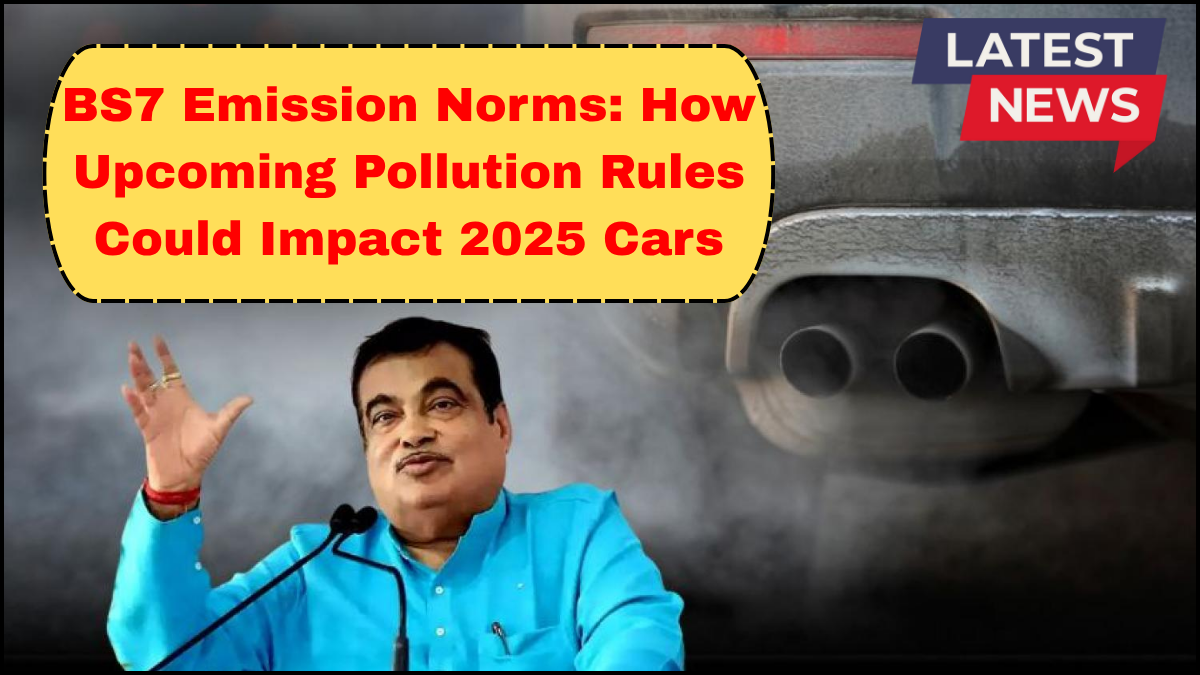India is on the brink of a significant shift in automotive regulation with the upcoming BS7 emission norms update, expected to be implemented in 2025. These stricter regulations aim to further tighten vehicle emission standards and align India with global benchmarks. As the country battles growing air pollution concerns, especially in urban centers, the pollution control law in India is becoming more aggressive—and automakers, suppliers, and consumers need to be ready.

What Are BS7 Emission Norms?
BS7 (Bharat Stage 7) emission norms are the next iteration of India’s emission standards, which define permissible limits for pollutants emitted by vehicles. They are part of a broader legislative effort under the Central Motor Vehicles Rules to reduce environmental harm caused by automotive emissions. Following the implementation of BS6 norms in April 2020, BS7 is expected to introduce even tighter controls on pollutants like nitrogen oxides (NOx), carbon monoxide (CO), hydrocarbons (HC), and particulate matter (PM).
Unlike BS6, which brought in a major leap by introducing diesel particulate filters (DPFs) and selective catalytic reduction (SCR) technologies, BS7 norms will focus more on real-world driving emission (RDE) compliance and possibly onboard monitoring systems (OBMs). This means vehicles will be required to meet pollution standards not just in laboratory tests but also in real-world conditions, a measure that has already been adopted in the EU under Euro 6d norms.
Why Is This Update Critical?
India ranks among the top most polluted countries globally. Vehicular emissions significantly contribute to air quality degradation, particularly in metro cities like Delhi, Mumbai, and Kolkata. The BS7 emission norms update is a strategic move by the Indian government to address this challenge under its comprehensive pollution control law in India.
The introduction of BS7 is not just about compliance; it’s about public health, environmental protection, and global competitiveness. As India eyes electrification and carbon neutrality in the coming decades, BS7 serves as a crucial transition phase that forces the automotive industry to invest in cleaner technologies.
Impact on the Automotive Industry
1. Increased Vehicle Costs
Implementing BS7-compliant technology won’t come cheap. New hardware such as enhanced after-treatment systems, advanced sensors, and OBMs will drive up manufacturing costs. Automakers may pass these costs on to consumers, making 2025 vehicles more expensive.
2. Pressure on Small Manufacturers
Smaller OEMs may struggle to absorb the research and development costs associated with BS7 compliance. This could lead to market consolidation or a shift toward partnerships to share technological capabilities and investment burdens.
3. Shift Toward Electrification
With the rising cost of compliance for internal combustion engine (ICE) vehicles, many manufacturers might fast-track their electric vehicle (EV) plans. BS7 could indirectly accelerate the EV transition, especially for city-based commuting segments where range anxiety is less of a concern.
4. Aftermarket and Maintenance Complexity
New diagnostic systems and emission control components will make vehicles more complex. This could increase servicing costs and require specialized training for mechanics. Consumers will also need to be more diligent about vehicle maintenance to ensure emission standards are met consistently.
Consumer Considerations
For the average car buyer, BS7 will mean cleaner vehicles, but likely at a higher price point. Prospective buyers in 2025 should factor in not just the upfront cost but also long-term operational expenses tied to maintenance and fuel efficiency.
It’s also possible that resale values of pre-BS7 vehicles may drop, especially in urban areas with low-emission zones or stricter regulatory enforcement. Buyers looking for long-term investments might prefer vehicles already aligned with BS7 standards for future-proofing.
What Automakers Are Doing to Prepare
Major players like Maruti Suzuki, Hyundai, Tata Motors, and Mahindra are already investing in R&D to align their vehicles with the BS7 emission norms update. Testing facilities are being upgraded to simulate real-world driving conditions, and collaborations with global tech providers are underway to integrate advanced emission control systems.
FAQs
Q1: When will BS7 emission norms be implemented in India?
The government is expected to roll out BS7 norms by 2025, although the exact date will depend on final regulatory notifications.
Q2: What’s the difference between BS6 and BS7 emission norms?
BS6 focused primarily on lowering NOx and PM levels using DPF and SCR technology. BS7 is expected to introduce real-world emissions testing and advanced onboard monitoring, pushing for better compliance in actual driving conditions.
Q3: How will BS7 norms affect diesel cars?
Diesel vehicles are likely to be the most impacted, as they emit higher levels of NOx and PM. Upgrading these vehicles to BS7 standards will require cost-intensive technologies, possibly reducing their appeal or availability in certain segments.
Q4: Will BS7 norms push more people toward electric vehicles?
Yes, the higher cost and complexity of BS7-compliant ICE vehicles could make EVs more attractive, especially in urban markets.
Q5: How can consumers check if a car meets BS7 standards?
Once BS7 norms are enforced, vehicles will carry certification indicating compliance. Additionally, automakers will highlight BS7 features in their marketing and technical documentation.
click here to learn more
